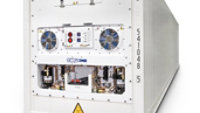Active vs. passive refrigeration in pharma cold chain

Selecting the ideal temperature-controlled solution
The global spending on pharmaceutical cold chain is estimated to grow by 24% and reach $21 billion within the next four years. It’s critical that the appropriate temperature-controlled solution—whether it’s active or passive, is selected to keep the supply chain running efficiently and make sure patients receive safe products.
There are pros and cons to an active or passive system, so the industry is reluctant to recommend one system over the other. This has to do with the context for the cold chain. Both systems can be effective as long as the external conditions are optimized for their use.
There are many factors to consider when selecting an active or passive solution. Here are just a few: cost, climate change implications, sustainability, cargo tracking, possible contamination issues, and unplanned maintenance risks. Each of these systems has an ideal case and is likely used in all pharmaceutical cold chains.
This white paper explores how both systems have much to offer, but if the wrong system is implemented there could be inefficiency within the supply chain that increases costs, or worse, puts patients at risk.



